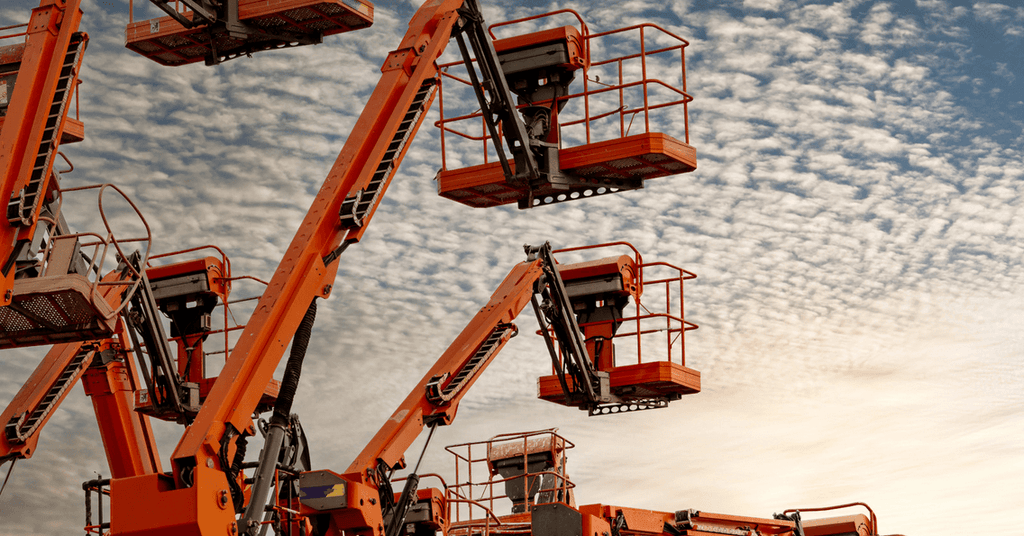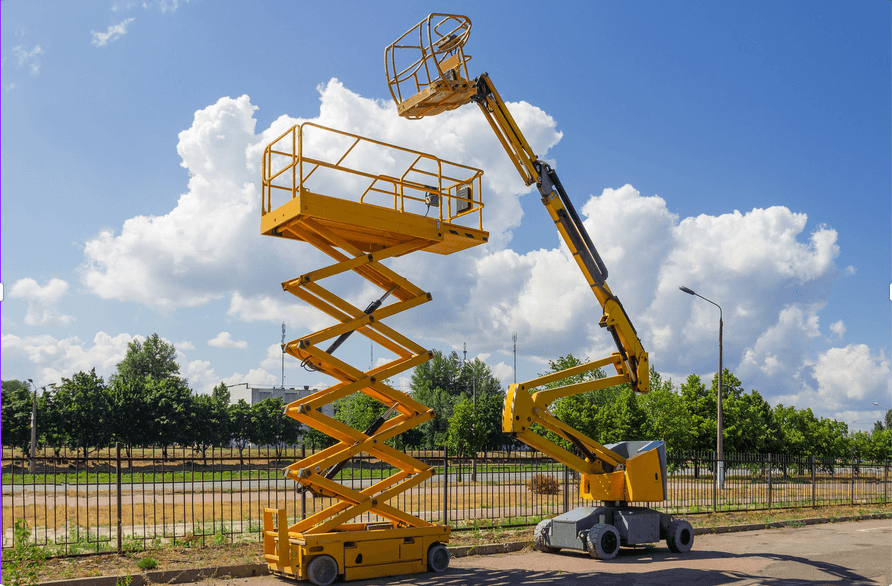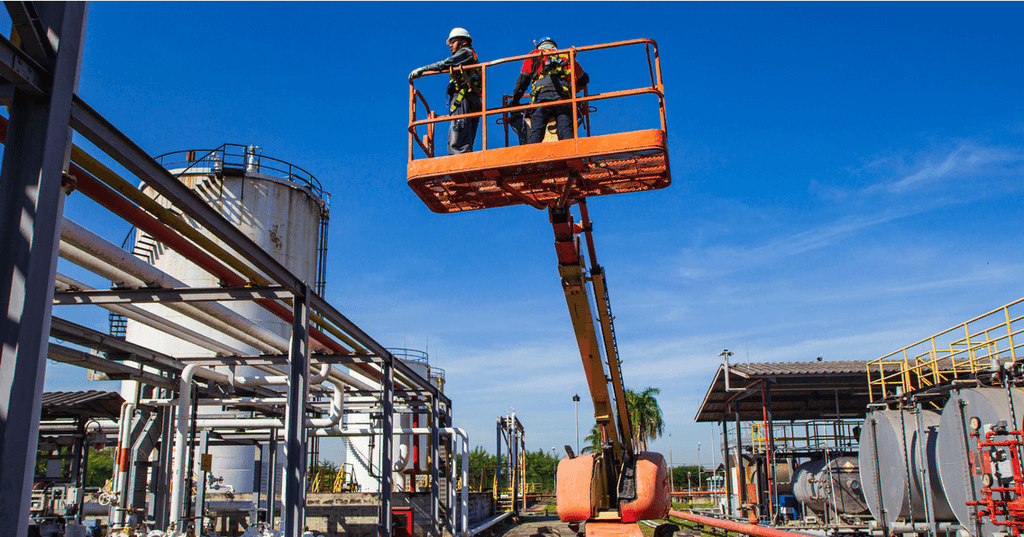My shopping cart
Your cart is currently empty.
Continue Shopping
Aerial Work Platforms (AWPs) are more than just construction tools; they are crucial in successfully completing various projects across numerous industries. Their versatility, reliability, and safety features have made them indispensable assets in today's fast-paced construction environment. Whether painting a high-rise building, repairing a transmission line, or performing routine maintenance in a warehouse, AWPs can help you reach new heights, literally and figuratively. The significance of these platforms extends beyond the realm of construction to sectors as diverse as retail, entertainment, and public services, underlining their universal relevance. Through this blog, we aim to shed light on the crucial role that AWPs play in different projects, emphasizing their unmatched utility and efficiency. Let's delve into the world of AWPs and better understand their impact on our everyday projects.
An Aerial Work Platform (AWP), also known as an aerial device, elevating work platform, or mobile elevating work platform, is a mechanical device used to temporarily access people or equipment in inaccessible areas, usually at height. These platforms are typically used for temporary, flexible access purposes such as maintenance and construction work or by firefighters for emergency access. They are designed to lift limited weights, usually less than a ton, although some have a higher safe working load. The versatility of AWPs is evident in their various types, which include scissor lifts, boom lifts, and cherry pickers, each offering unique features suited to different tasks. AWPs are a testament to human ingenuity, allowing us to work safely and efficiently in environments that would otherwise be difficult to reach.

Scissor lifts are a popular type of AWP, characterized by a platform that can only move vertically, thanks to the crisscrossing "scissor" mechanism from which it takes its name. These lifts are highly valued for their stability and large platforms, making them ideal for tasks that require extensive movement, like painting or installing signs. They're also well-suited to indoor use due to their lower heights and compact dimensions.
Boom lifts, on the other hand, offer far greater flexibility. With both vertical and horizontal movement, they provide access to hard-to-reach areas that scissor lifts cannot. Boom lifts come in two main types: telescopic and articulated. Telescopic boom lifts have long, extendable arms that provide maximum reach, making them perfect for construction or industrial jobs. Articulated boom lifts possess jointed arms that can bend and reach over obstacles, ideal for intricate tasks like tree trimming or working around infrastructure.
Aside from scissors and boom lifts, the AWP family includes diverse specialized platforms. Vertical personnel lifts, for instance, are compact and easily maneuverable, perfect for reaching high shelves in a warehouse. Trailer-mounted lifts offer mobility and ease of transport for outdoor tasks, such as maintenance or event setup. Understanding the unique features of each type of AWP will ensure you select the best platform for your specific needs and tasks.

This section will take you through real-world applications of Aerial Work Platforms (AWPs) across various industries. These instances will serve as practical examples demonstrating the indispensability of AWPs in facilitating elevated work and how their unique features have been utilized to achieve the desired results.
In construction, AWPs have revolutionized efficiency and safety. These versatile machines navigate uneven terrain, making them perfect for painting, window installation, and exterior repairs. Telescopic boom lifts are employed in constructing high-rise buildings, allowing workers to reach great heights safely. Articulated boom lifts maneuver around obstacles, while scissor lifts are compact and ideal for indoor tasks. Using AWPs reduces falls, enhances productivity, and ensures high-quality results in construction projects.
In film and television, AWPs are crucial in camera and lighting setup. Articulated boom lifts offer flexibility to place cameras and lights at the right angles and heights, capturing perfect shots even in complicated scenes. They also assist in stage setup for concerts and other large-scale events, ensuring safety while hanging lights and speakers at great heights.
In retail, AWPs, particularly vertical personnel and scissor lifts, offer a safe and efficient way to reach high shelves and displays. They are instrumental in stocking and inventory management in warehouses and large retail stores, improving worker safety and reducing the time required.
For public services like firefighting and power line maintenance, AWPs are indispensable. Boom lifts allow firefighters to reach high floors swiftly and safely, while specialized insulated AWPs provide safe platforms for electrical workers repairing or maintaining high-voltage power lines.
In agriculture, cherry pickers are often used for fruit picking in orchards. They provide a safe and efficient way to reach the top of trees, reducing the physical strain on workers and increasing productivity.
These examples highlight the diverse applications of AWPs across various industries, underlining their broad utility and effectiveness.
Before you choose an AWP, understanding your work environment is crucial. Indoor work often demands compact equipment with low emission and noise levels, making electric scissor lifts or vertical personnel lifts perfect choices. Outdoor projects, however, might call for more robust and weather-resistant equipment like boom lifts or trailer-mounted lifts. They offer greater reach and flexibility necessary for navigating outdoor obstacles.
The height and weight requirements of your task are also significant determining factors. If your job involves reaching high places and carrying heavy loads, a telescopic boom lift with a high, safe working load might be your best bet. A scissor lift or vertical personnel lift suffice for tasks requiring less height and carrying lighter materials. Always check the AWP's maximum height and weight capacity before deciding.
The need for maneuverability can't be overstated. Tasks requiring navigating around obstacles, reaching over structures, or working in tight spaces demand an AWP with high maneuverability, like an articulated boom lift. For straightforward vertical access, scissor lifts with stable platforms could be ideal.
If your tasks involve frequent site changes, portability becomes a crucial factor. AWPs like trailer-mounted lifts are designed for easy transportation, allowing you to move efficiently from one worksite to another. Conversely, larger, more stable platforms like scissors or boom lifts may be more appropriate for stationary projects. Always consider the logistics of transporting your AWP when making your choice.
Safety should always be the utmost priority when operating AWPs. The inherent dangers of working at heights necessitate stringent safety measures and protocols. Two significant areas that demand attention are the safety features incorporated into AWPs and the operational safety best practices that the users should follow.
AWPs are equipped with a range of safety features to ensure user safety. These include safety harnesses, which help secure the user to the platform and prevent falls. Overload sensors are another critical feature designed to alert users if the platform is overloaded and at risk of tipping. In addition, many AWPs come with anti-collision sensors that detect obstacles and prevent impacts. Moreover, emergency stop buttons are a staple in all AWPs, allowing users to halt all operations immediately in case of a hazard.
When operating AWPs, it's crucial to adhere to the following best practices:
Having emergency protocols in place is essential for dealing with any potential hazards. These protocols may include emergency evacuation procedures, first aid measures, and swift communication methods for alerting relevant personnel. Furthermore, regular safety training should be conducted for all AWP operators. This training should cover the correct operation of the AWP, understanding and responding to the machine's safety features, and executing emergency protocols when necessary.
When it comes to AWPs, not only is safety important, but cost-effectiveness and efficiency also play a vital role. Understanding the cost-benefit analysis of renting versus buying AWPs and learning some efficiency tips for AWP usage can help maximize your investment.
Deciding between renting and buying an AWP involves several considerations. Renting could be the most cost-effective option if your lift needs are temporary or project-specific. Renting offers flexibility; you can choose the most appropriate lift for each project without a large capital investment. Moreover, maintenance and storage costs are typically covered by the rental company. However, if you find your business consistently requires an AWP for regular and prolonged use, purchasing one might make more financial sense. While the upfront cost is higher, the long-term savings could be significant. Additionally, owning an AWP allows immediate availability and custom adaptations for specific business needs. Always perform a thorough cost-benefit analysis, considering your project demands, budget, and long-term needs before deciding.
To maximize the efficiency of your AWP, considering a few operational tips may be beneficial. First, always ensure the AWP is properly maintained. Regular servicing can help prevent costly breakdowns and downtime. Second, train your operators thoroughly. A well-trained operator can work more quickly, safely, and efficiently, maximizing the productivity of your AWP. Lastly, plan your tasks carefully to minimize the movement and adjustment of the AWP, saving time and energy. Integrating these tips into your AWP usage can significantly enhance its efficiency and effectiveness.
Proper maintenance and upkeep of AWPs are critical for the smooth operation and longevity of the equipment. The following sections delve into the importance of regular maintenance and provide valuable tips for extending the lifespan of your AWP.
Consistent and thorough maintenance of AWPs is not just a matter of operational efficiency but also safety. Regular inspections and preventive maintenance can help identify potential issues before they escalate into serious problems, reducing the risk of equipment failure and accidents. Additionally, well-maintained AWPs perform better and more reliably, improving your projects' productivity and cost-efficiency.
The effective and safe use of Aerial Work Platforms (AWPs) hinges critically on a few key considerations. First, safety is paramount, necessitating regular personnel training and adherence to standard safety protocols. Second, achieving cost-effectiveness and efficiency with AWPs involves a careful cost-benefit analysis between renting and buying, always considering the unique needs of your project and company. Rental offers flexibility and low upfront costs, while purchasing provides long-term savings, immediate availability, and the potential for customization. Furthermore, regular maintenance of AWPs is crucial, not only for operational efficiency but also for safety. It includes scheduled servicing, fluid level checks, wear and tear inspections, cleanliness, proper storage, operator training, and genuine parts. These practices help prevent potential issues, enhance productivity, and extend the lifespan of the equipment. By abiding by these key takeaways, your organization can effectively leverage the power of AWPs to enhance productivity while ensuring safety and maximizing return on investment.
Discover the possibilities with Falcon Rentals today. Based in Northern Alberta, we invite you to contact us through our contact form. Our knowledgeable team is eager to assist you in making the perfect choice that meets your unique requirements.